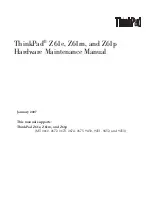
When enabled, the admission-bandwidth for a particular (S,G) is read from the
multicast bandwidth map and recorded in the mroute when the (S,G) mroute is
created. If you configure a port limit and the OIF count on the port exceeds that limit,
no OIFs on that port are added to mroutes (that is, OIFs are blocked).
When a multicast forwarding entry (an mroute) is added with an outgoing interface,
OIF is blocked from forwarding data if the additional bandwidth contributed by the
(S,G) would exceed the admission-bandwidth limit for the port on which the interface
resides.
CAUTION:
Before you can limit port-level admission bandwidth, you must first create
a bandwidth map. See “Defining a Multicast Bandwidth Map” on page 10 for details.
Enabling Port Admission Bandwidth Control
You can use the
mroute port admission-bandwidth-limit
command to limit the
total multicast bandwidth that can be admitted on a port. The admitted bandwidth
is summed across all virtual routers with IPv4 and IPv6 mroutes that have OIFs on
the port.
NOTE:
Admission bandwidth values for a given (S,G) mroute are determined from
the bandwidth map. See “Defining a Multicast Bandwidth Map” on page 10 for details.
Dynamic Port Admission Bandwidth Control
You can configure the system to dynamically limit the total multicast bandwidth that
can be admitted on a port. The system performs dynamic port-level admission control
when an OIF on that port is added to the mroute for a given <S, G> multicast
stream.
After the priority bandwidth limit on the port is reached, OIFs on the prioritized <S,
G> are only allowed to forward the traffic and unprioritized <S, G> streams are
blocked from forwarding data on the OIF.
To enable a priority value for the <S, G> multicast stream, issue “set priority” on
page 15 in the multicast bandwidth map. A priority value of 0 indicates an
unprioritized stream and any value other than 0 indicates a prioritized stream.
Currently there is no support for classification of prioritized streams. For more
information about the
set priority
command, see “Defining a Multicast Bandwidth
Map” on page 10
.
You can configure limits for the bandwidth that is dynamically admitted on the port.
The priority bandwidth limit controls the priority bandwidth admitted on a port. The
hysteresis limit sets the minimum priority bandwidth limit before the system evaluates
mroutes and admits any blocked OIFs.
mroute port admission-bandwidth-limit
28
■
Blocking and Limiting Multicast Traffic
JUNOSe 11.1.x Multicast Routing Configuration Guide
Summary of Contents for JUNOSE 11.1.X MULTICAST ROUTING
Page 6: ...vi...
Page 8: ...viii JUNOSe 11 1 x Multicast Routing Configuration Guide...
Page 16: ...xvi List of Figures JUNOSe 11 1 x Multicast Routing Configuration Guide...
Page 18: ...xviii List of Tables JUNOSe 11 1 x Multicast Routing Configuration Guide...
Page 24: ...2 Internet Protocol Version 4 JUNOSe 11 1 x Multicast Routing Configuration Guide...
Page 64: ...42 Investigating Multicast Routes JUNOSe 11 1 x Multicast Routing Configuration Guide...
Page 100: ...78 Monitoring IGMP Proxy JUNOSe 11 1 x Multicast Routing Configuration Guide...
Page 145: ...Monitoring PIM 123 Chapter 3 Configuring PIM for IPv4 Multicast...
Page 146: ...124 Monitoring PIM JUNOSe 11 1 x Multicast Routing Configuration Guide...
Page 166: ...144 Monitoring DVMRP JUNOSe 11 1 x Multicast Routing Configuration Guide...
Page 168: ...146 Internet Protocol Version 6 JUNOSe 11 1 x Multicast Routing Configuration Guide...
Page 204: ...182 BGP Multicast JUNOSe 11 1 x Multicast Routing Configuration Guide...
Page 263: ...Part 3 Index Index on page 243 Index 241...
Page 264: ...242 Index JUNOSe 11 1 x Multicast Routing Configuration Guide...
















































